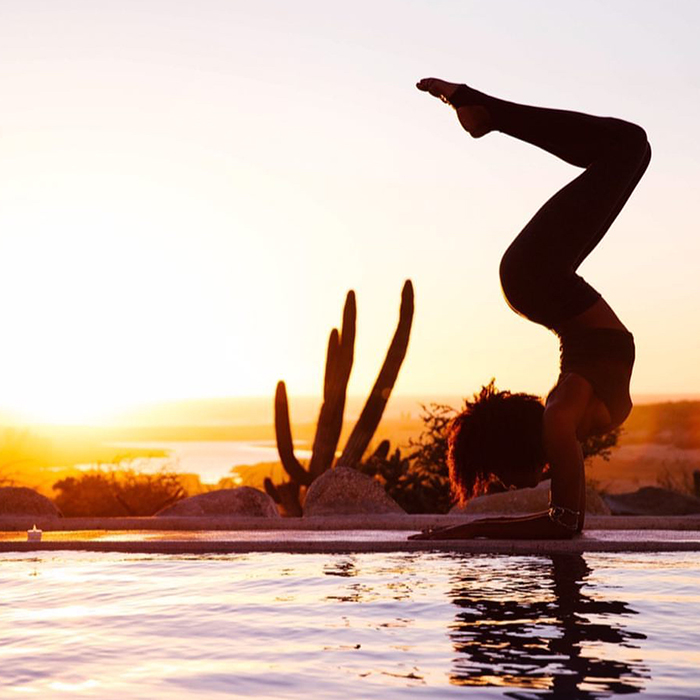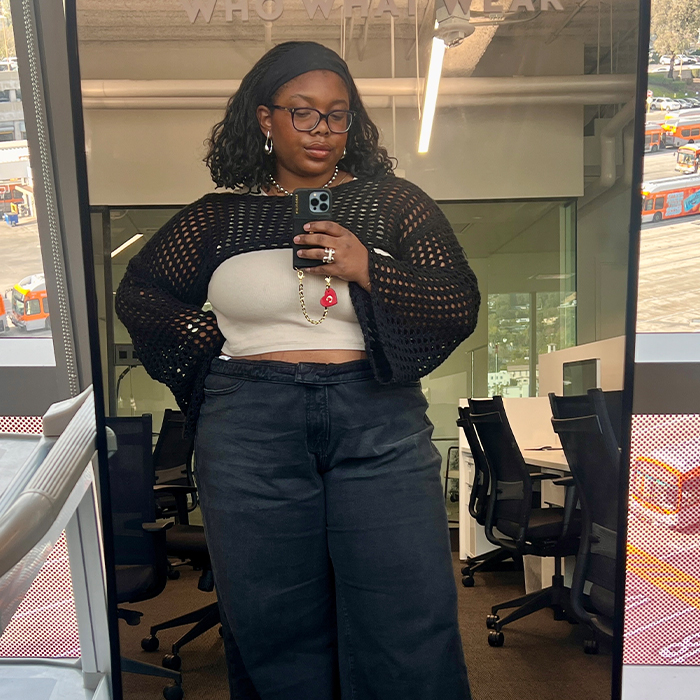This 5-Second Trick Can Clear Up Your Skin and Boost Your Mood

Danielle Acoff is a professional dancer, model, actress, and yoga instructor with a passion for holistic health. She has worked in entertainment for 12 years and uses yoga, meditation, and her love of all things movement to keep her balanced in a high-pressure industry. Keep an eye out for her articles about everything from self-care to breathing techniques. Below, she talks about the benefits of flipping upside down—and why yoga inversions don't have to be as intimidating as they seem.
My love affair with inversions began seven years ago, and it’s safe to say that I will never tire of being upside down. In addition to building great core strength and stability, there are so many benefits to inversions and getting your heart above your head. Bringing a new rush of freshly oxygenated blood to your head has an energizing and calming effect by reducing cortisol—therefore elevating your mood. That's not to mention the incredible benefits for your complexion: On account of the boost in blood circulation, inversions can help acne and wrinkles by reversing gravity, giving you radiant plump skin. (You can see some of these benefits just by hanging your head upside down.)
When I started learning inversions, the most challenging element for me was the infamous handstand. I had zero arm strength, and my natural back flexibility kept me toppling over time and time again. Today, seven years later, I am able to hold handstand and just recently began playing with leg variations. There is always something more to learn and to challenge yourself within inversions, and you learn so much about yourself through the process. Am I listening to my body? How do I act in the presence of difficulty? It’s quite the journey, and I think it's important to find the joy in the process, in the small breakthroughs. One day you, when you least expect it, you will surprise yourself—the key is consistent practice.
In order to start your inversion practice, prepping your body and core through different preliminary poses is crucial. These are some of the drills I found to be extremely helpful when building strength for inversions. (If you're unsure about your form or need someone to spot you, consult a yoga teacher IRL.)
Pike Plank
- Begin in a regular plank: shoulders over your wrists, engaging the abs, keeping the shoulders away from the ears, and pressing the ground away.
- Next, walk your feet in as far as you can in while keeping your legs straight. Activate your core and move your shoulders forward over your hands—this imitates the same muscles for going into a full handstand.
- Look between your hands and lift your heels as high as you can. Then walk back down to plank.

L stand on wall
- Start by sitting with your back against the wall and your legs extended. Look where your feet are and replace the position with your hands so you’re now in a downward dog with your heels against the wall. (We start against the wall to make sure we have enough distance between our hands and the wall.)
- Walk your feet up the wall until your body forms an “L” shape and your legs are parallel to the floor.
- Next, practice lifting one leg off the wall toward the ceiling, and do the same on the other leg.
Handstand kick-ups
- This one is by far my favorite drill and helped me the most in practicing balance. Start in a standing split and lightly lift the heel, then toes off the mat kicking up gently.
- You can try to hold this position of L shape and then lightly come down, or you can kick up and hold the handstand as long as you can and slowly bringing it down, one leg at a time, with control.
Next up: Learn how to ground yourself in 30 seconds or less.
Disclaimer
This article is provided for informational purposes only and is not intended to be used in the place of advice of your physician or other medical professionals. You should always consult with your doctor or healthcare provider first with any health-related questions.

